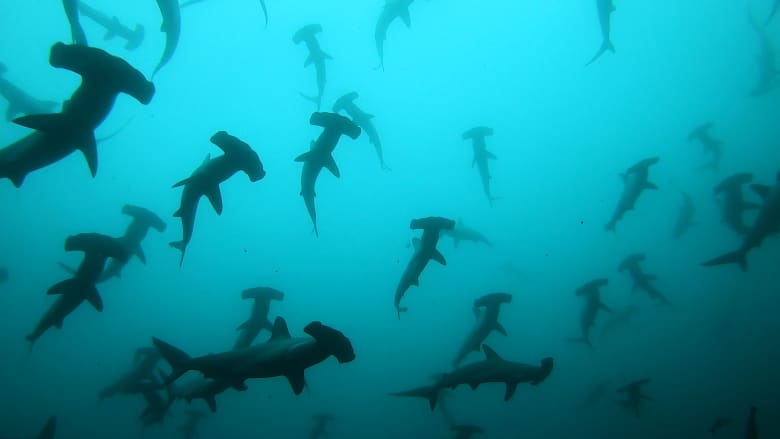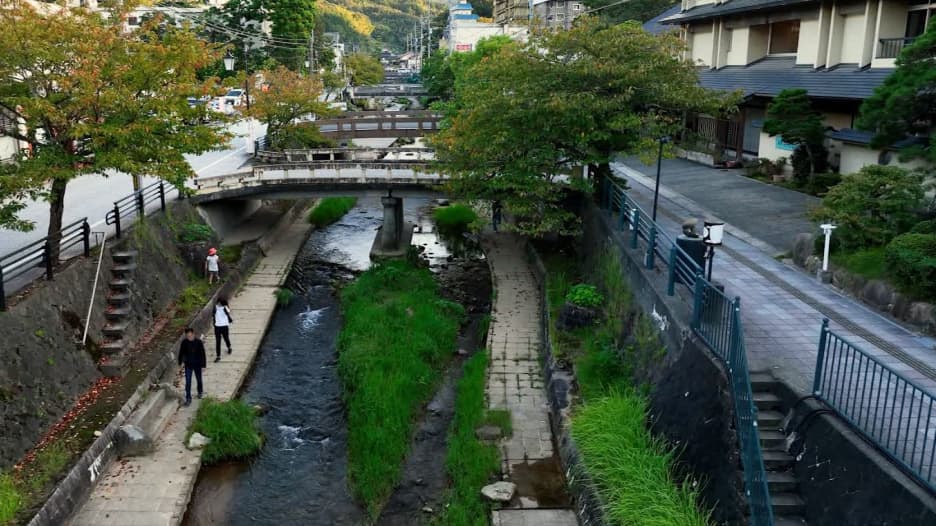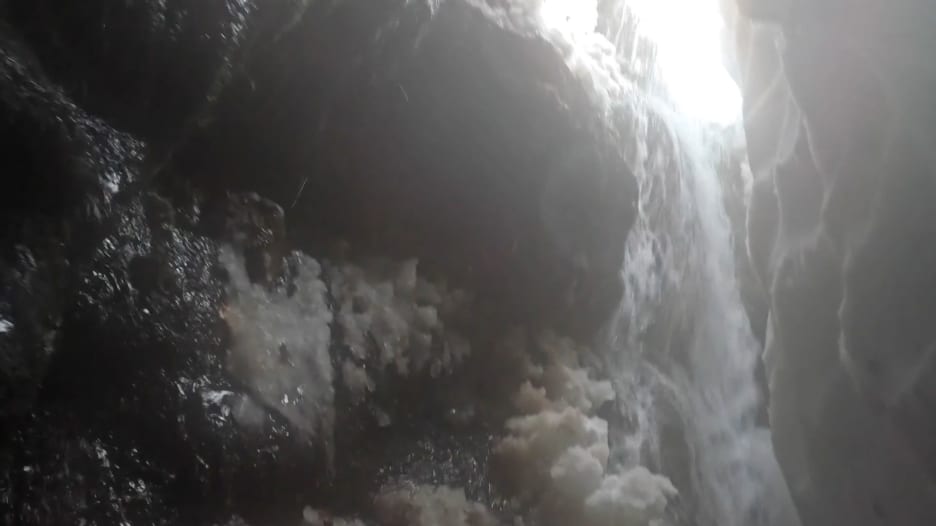دبي، الإمارات العربية المتحدة (CNN) -- أصبحنا في أول أيام نوفمبر/ تشرين الثاني، لكن، لأول مرة، ما زال جبل فوجي الياباني الشهير من دون غطاء ثلجي، منذ بدء تسجيل البيانات قبل 130 عامًا.
عادةً ما تكون قمم أعلى جبل في اليابان مغطاة بالثلوج بحلول مطلع أكتوبر/ تشرين الأول، لكن حتى يوم الثلاثاء مازالت غير مكتسية باللون الأبيض، الأمر الذي دقّ ناقوس الخطر بشأن آثار أزمة المناخ على أحد المعالم الأكثر شهرة في البلاد.
وعادة ما يُنبئ أوّل تساقط للثلوج بوصول الشتاء. ويأتي ذلك عقب موسم التسلّق الصيفي، الذي انتهى هذا العام في 10 سبتمبر/ أيلول.
تبدأ القمم الثلجية بالتكوّن على جبل فوجي في 2 أكتوبر/ تشرين الأول، كمعدل وسطي. وفي العام الماضي، تم تسجيلها في 5 أكتوبر/ تشرين الأول، وفقًا لوكالة الأرصاد الجوية اليابانية، رغم أنّ هيئة الإذاعة العامة NHK ذكرت أن معظمها ذاب في مطلع نوفمبر/ تشرين الثاني، بسبب درجات الحرارة المرتفعة.
لم يعلن مكتب الأرصاد الجوية المحلي في كوفو باليابان أول تساقط للثلوج على فوجي هذا العام، وهو أمر قام به منذ إنشائه في عام 1894، مشيرًا إلى الطقس الدافئ غير الموسمي.
وقال شينيتشي ياناغي، ضابط الأرصاد الجوية في مكتب كوفو، لـCNN الثلاثاء: "نظرًا لاستمرار ارتفاع درجات الحرارة في اليابان منذ الصيف وبالتوازي مع هطول الأمطار، لم يكن هناك تساقط للثلوج".
ولفت إلى أنّ نقص الثلوج حتى 29 أكتوبر/ تشرين الأول، فاق الرقم القياسي السابق في 26 أكتوبر/ تشرين الأول، الذي تم تسجيله في عامي 1955 و2016.
وقالت وكالة الأرصاد الجوية في سبتمبر/ أيلول إنّ اليابان سجّلت الحرارة الأعلى هذا الصيف منذ بدء الإحصاءات في عام 1898.

وقالت الوكالة إنّ متوسّط درجة الحرارة من يونيو/ حزيران إلى أغسطس/ آب كان فوق المستوى الطبيعي بـ 1.76 درجة مئوية، متجاوزًا الرقم القياسي السابق البالغ 1.08 درجة المُسجّل في عام 2010.
ظلًّت اليابان دافئة بشكل غير عادي في الخريف، حيث سجّلت ما لا يقل عن 74 مدينة درجات حرارة تبلغ 30 درجة مئوية (86 درجة فهرنهايت) وما فوق في الأسبوع الأول من أكتوبر/ تشرين الأول، وفقًا لتحليل من مجموعة الأبحاث غير الربحية Climate Central.
ووجدت Climate Central أنّ أزمة المناخ زادت من احتمالية الحرارة غير المألوفة التي شهدتها اليابان في أكتوبر/ تشرين الأول بثلاث مرات.
لم تكن حرارة الصيف الشديدة في اليابان حدثًا محليًا. وحطّم هذا الصيف الأرقام القياسية للحرارة العالمية للعام الثاني على التوالي، حيث يسير عام 2024، على المسار الصحيح ليكون العام الأكثر حرارة المسجّل في التاريخ.
وساعدت ظاهرة المناخ الطبيعي "إل نينيو" بدفع ارتفاع درجات الحرارة، بالإضافة إلى العوامل البشرية مثل حرق الوقود الأحفوري، وهي المحرك الرئيسي لأزمة المناخ.
لقد حذر العلماء منذ فترة طويلة من أن العالم بحاجة إلى الحد من الاحترار العالمي إلى 1.5 درجة فوق مستويات ما قبل الصناعة لتجنب الآثار الأكثر كارثية لتغير المناخ.
وجدت دراسة جديدة في يناير/ كانون الثاني، أن أزمة المناخ قلّلت من الغطاء الثلجي في معظم أنحاء نصف الكرة الشمالي في السنوات الأربعين الماضية.
قد يكون تساقط الثلوج في وقت لاحق على جبل فوجي مؤشراً مقلقاً على الاتجاه العالمي، حيث تؤثر فصول الشتاء الأكثر دفئًا على الثلوج، والسياحة، والاقتصادات المحلية، وإمدادات الغذاء والمياه، وحتى الحساسية.
يقع جبل فوجي الذي يبلغ ارتفاعه 3،776 مترًا بين محافظتي ياماناشي وشيزوكا في اليابان، وهو موقع تراث عالمي لليونسكو ورمز لليابان.
عادة ما يكون مغطىً بالثلوج معظم العام حتى يبدأ موسم التسلق السنوي في يوليو/ تموز، حيث يستقبل ملايين الزوار الحريصين على المشي لمسافات طويلة إلى القمة، أو مشاهدة شروق الشمس من منحدراته الشهيرة.
في السنوات الأخيرة، عانى الجبل من الإفراط في السياحة. وسبق وقال مسؤولون يابانيون لـCNN إن الزوار كانوا يلقون القمامة، ويرهقون مرافق المراحيض، ويمشون بملابس غير مناسبة، ما أدى إلى وقوع حوادث أو إصابات.
في يوليو/ تموز، فرضت السلطات ضريبة سياحية ووضعت لوائح جديدة لإدارة الحشود. الآن، يجب على المتسلقين دفع 2000 ين (12.40 دولارًا) للشخص الواحد، بحدّ أقصى يومي يبلغ 4 آلاف متسلّق يوميًا.







